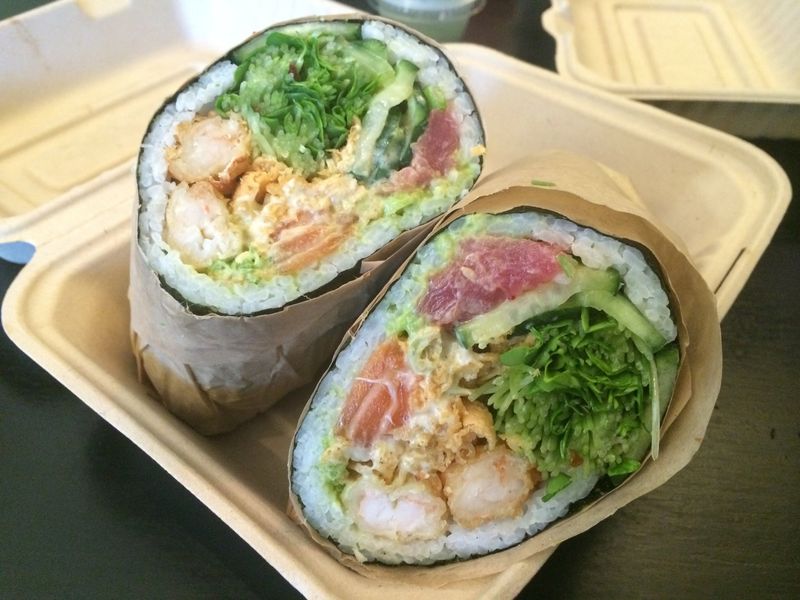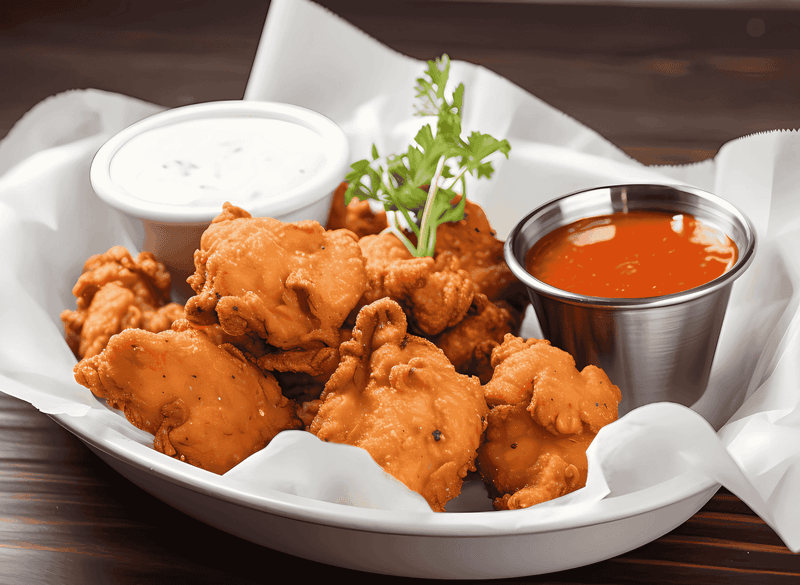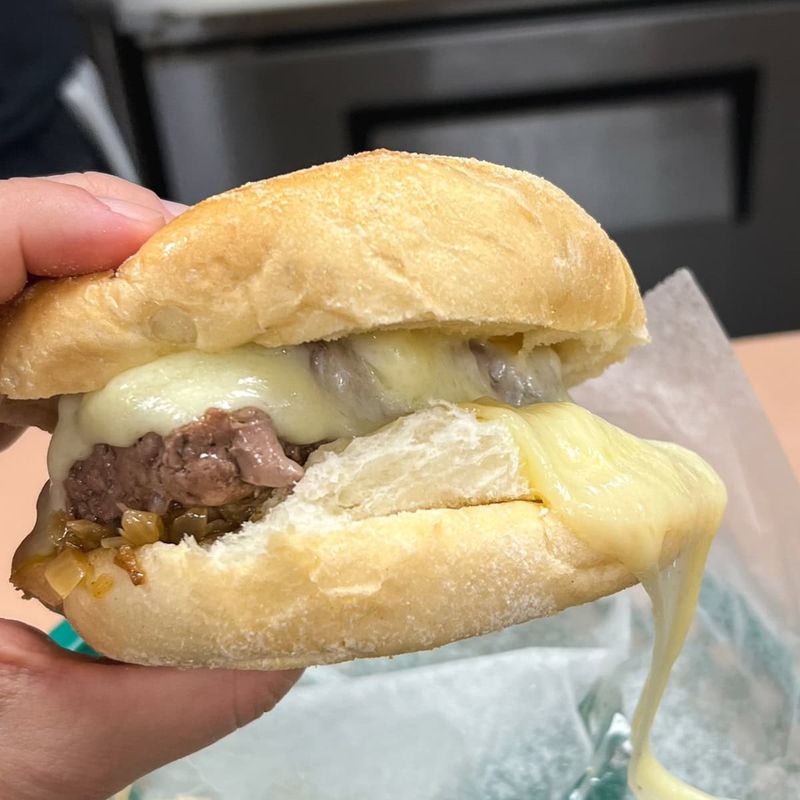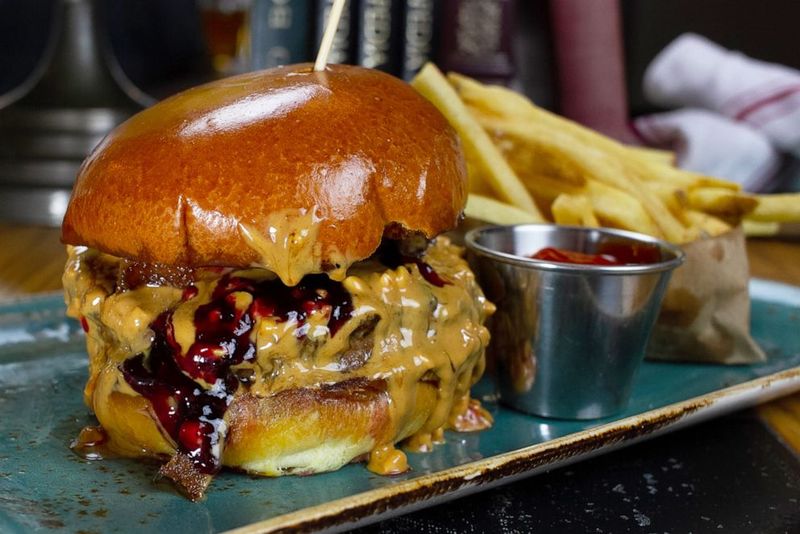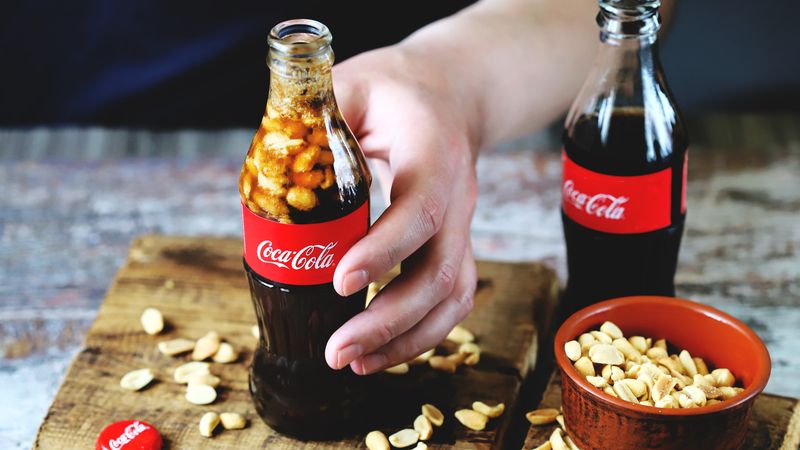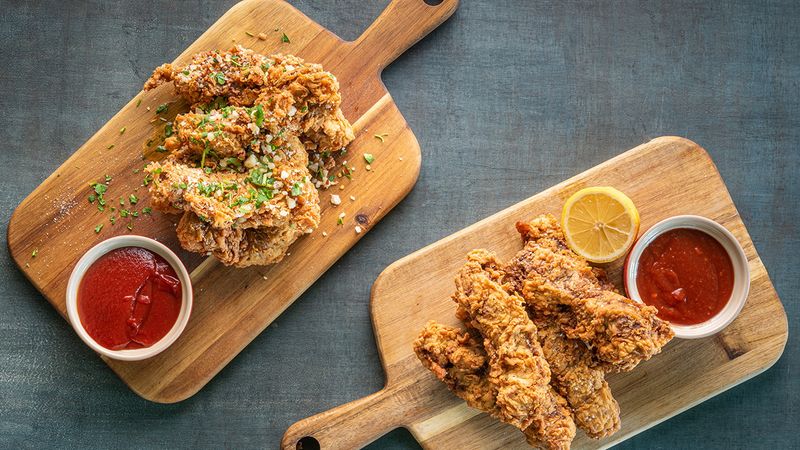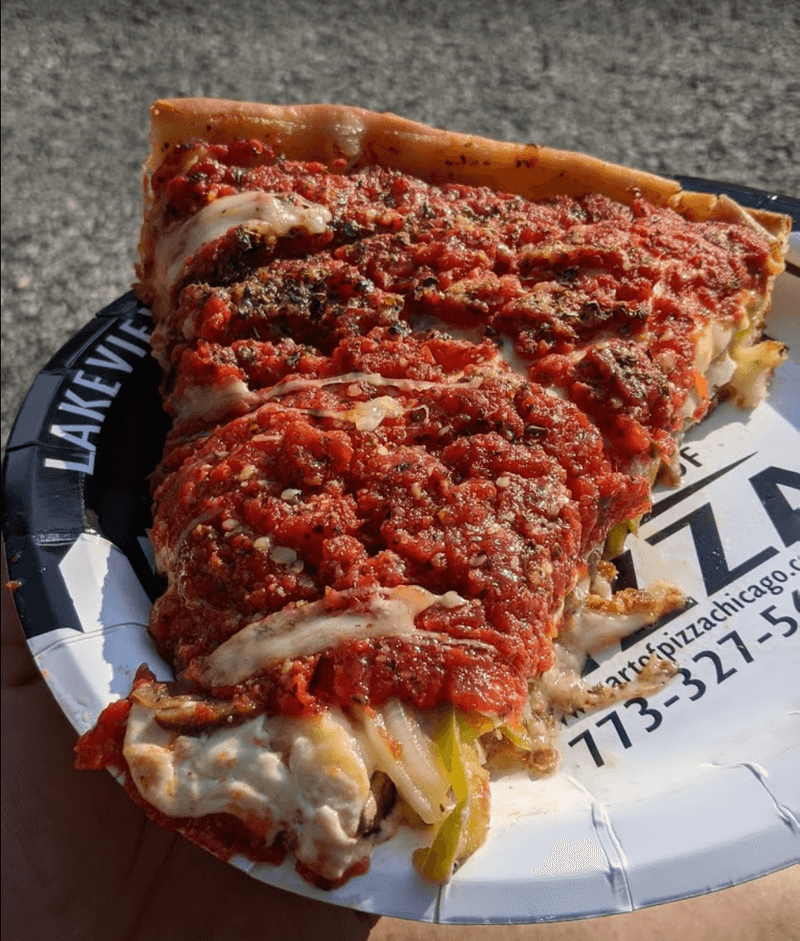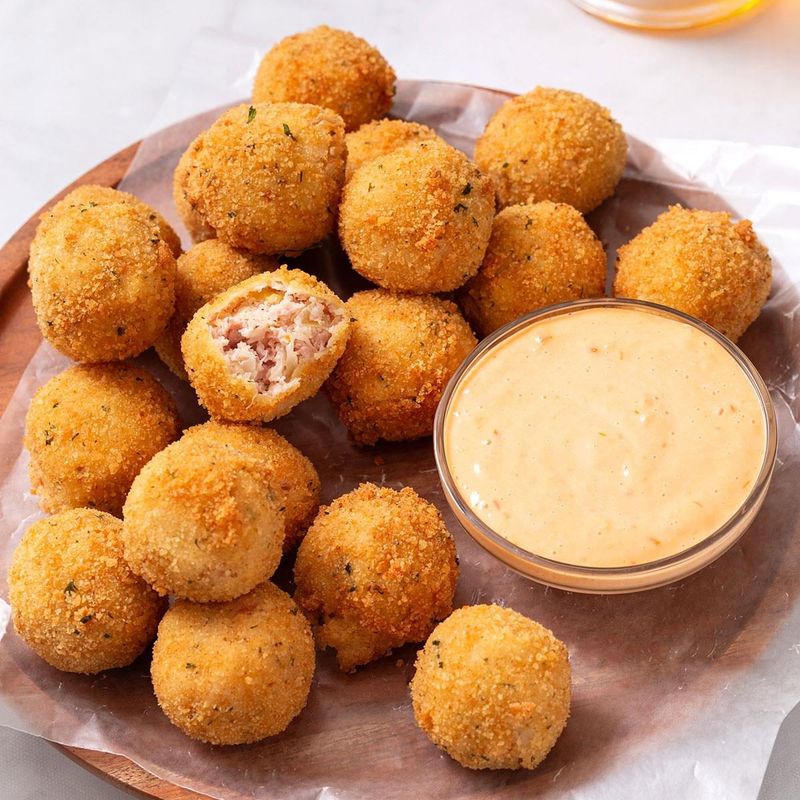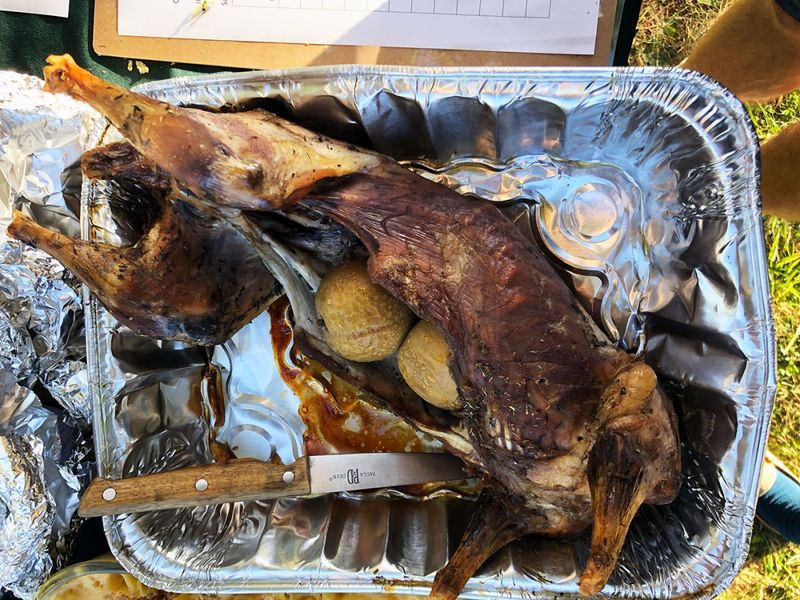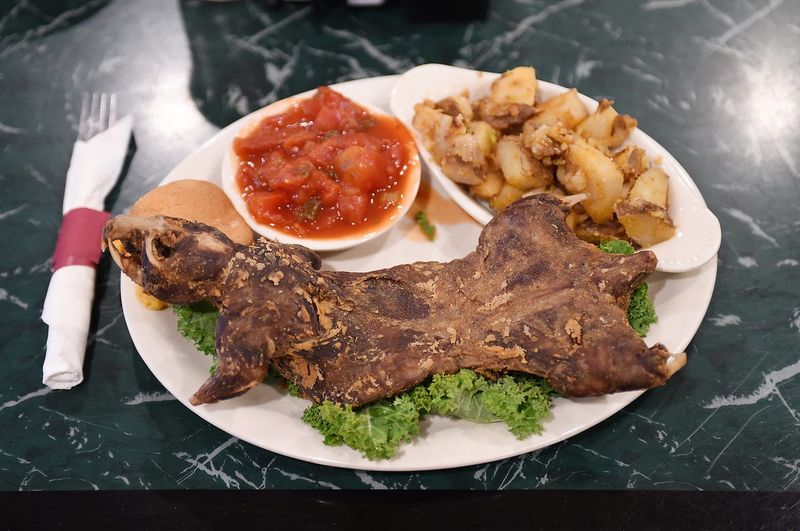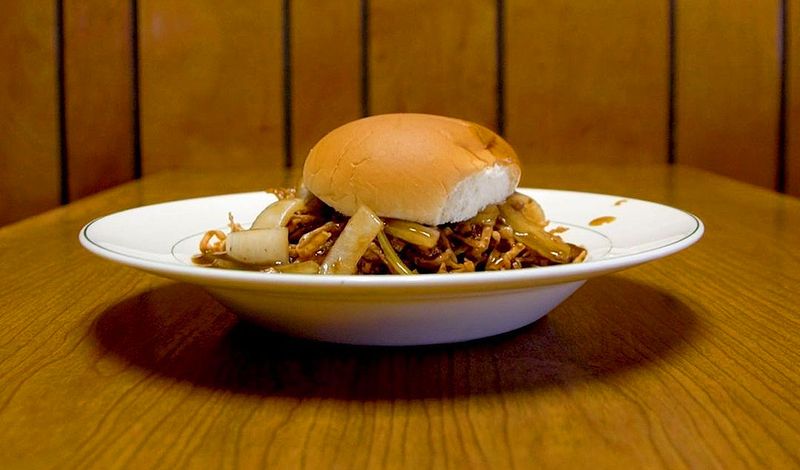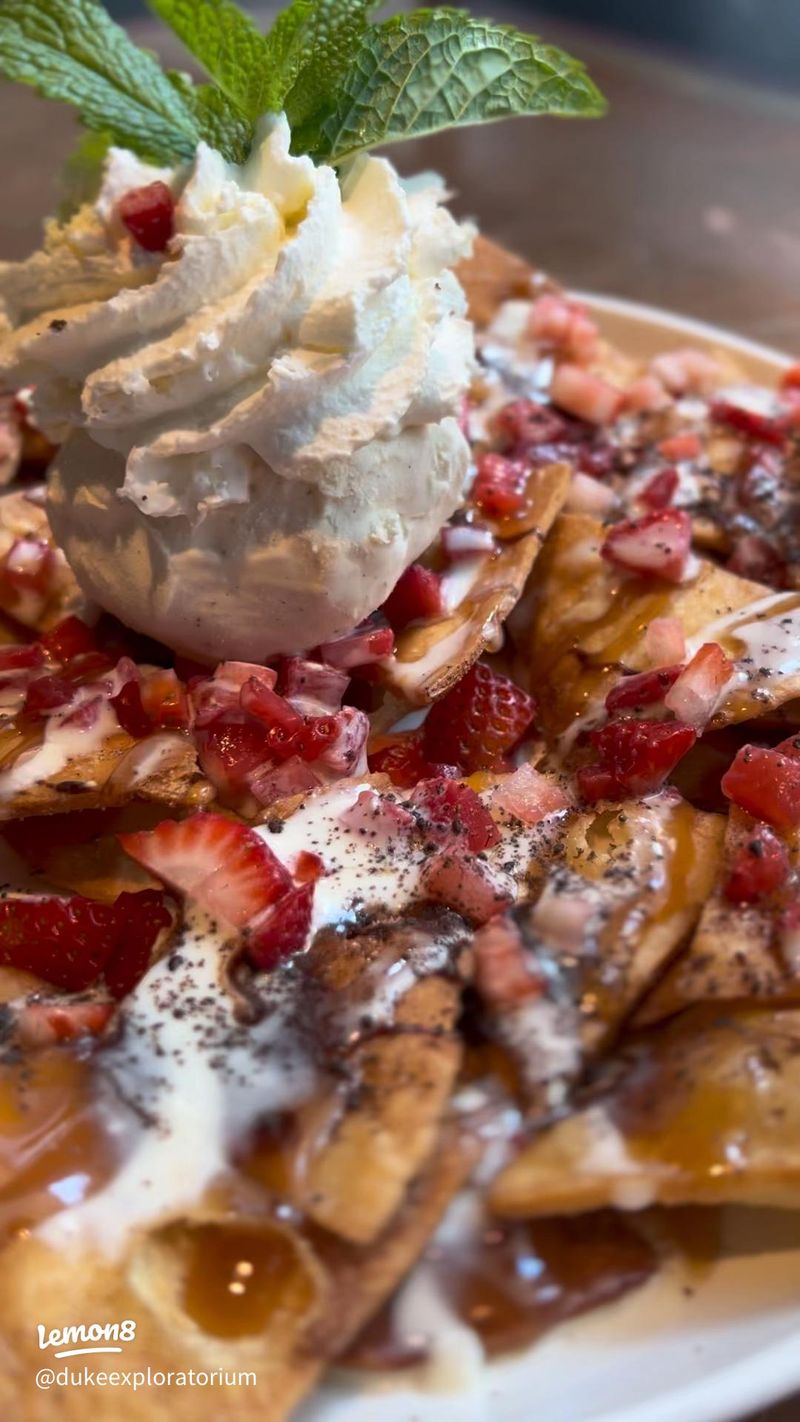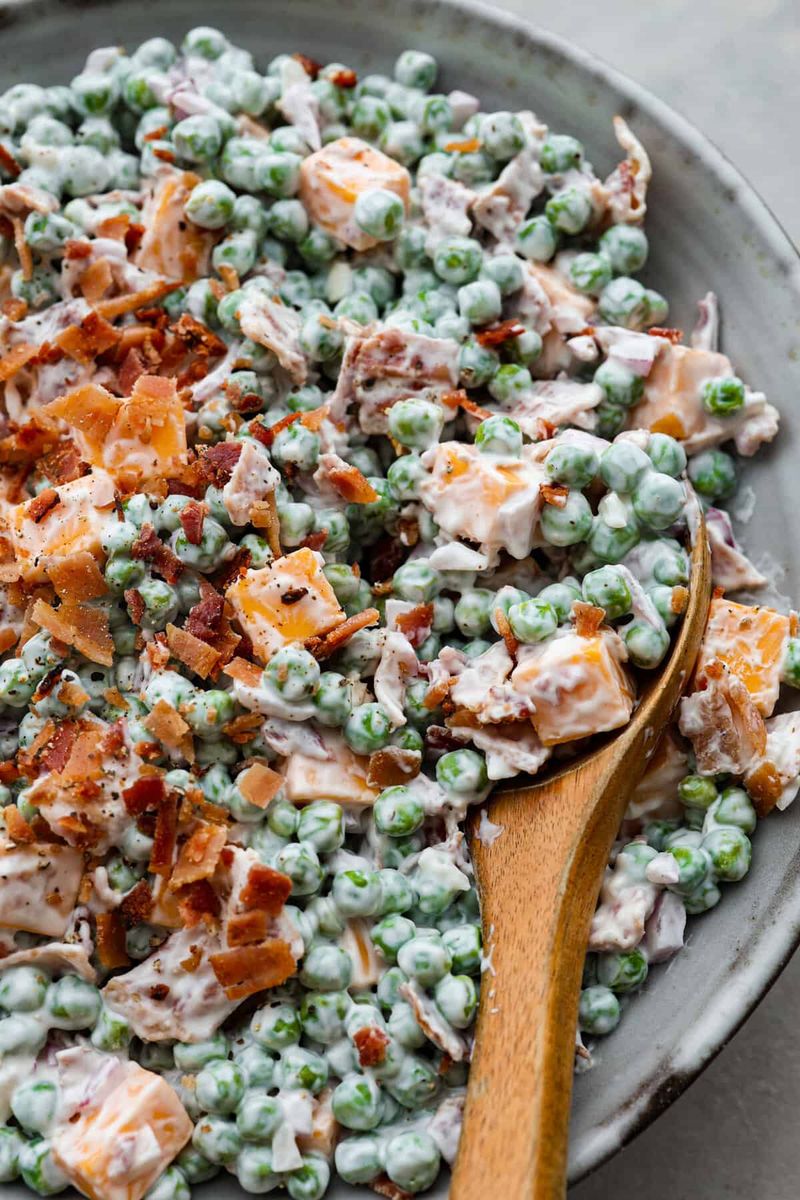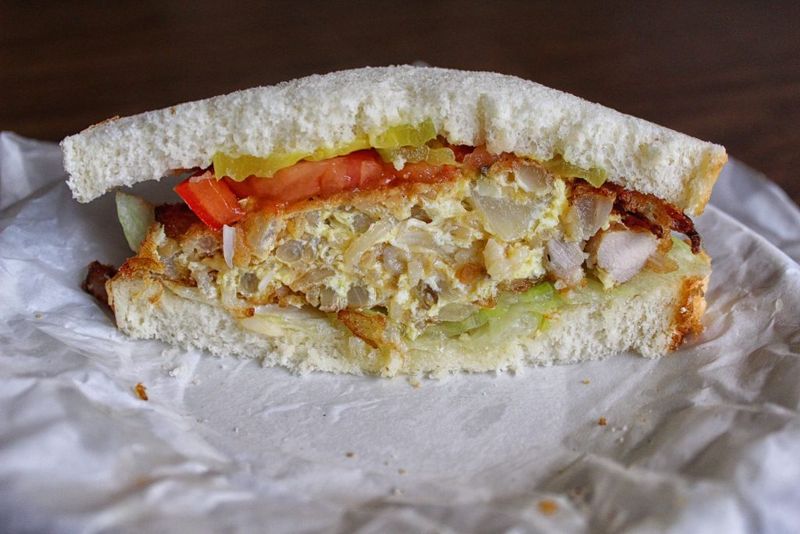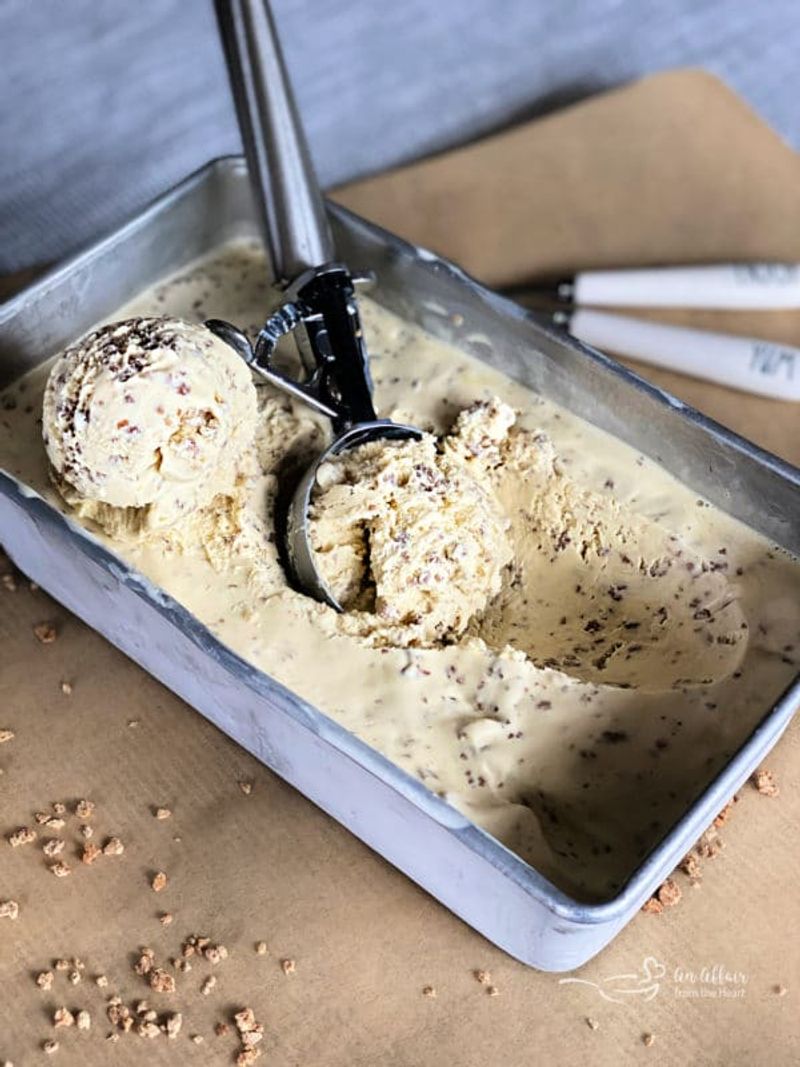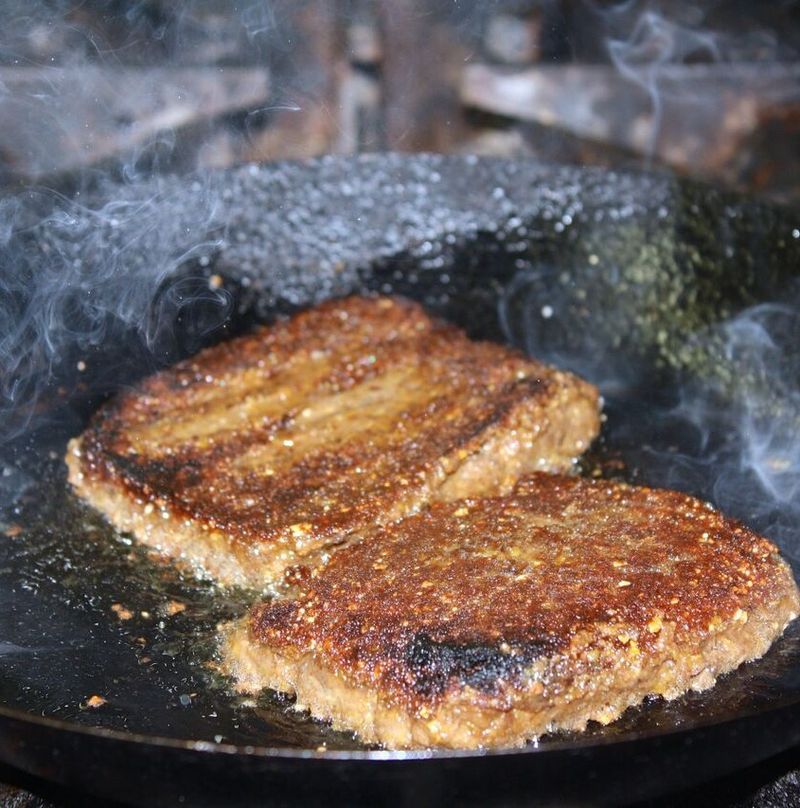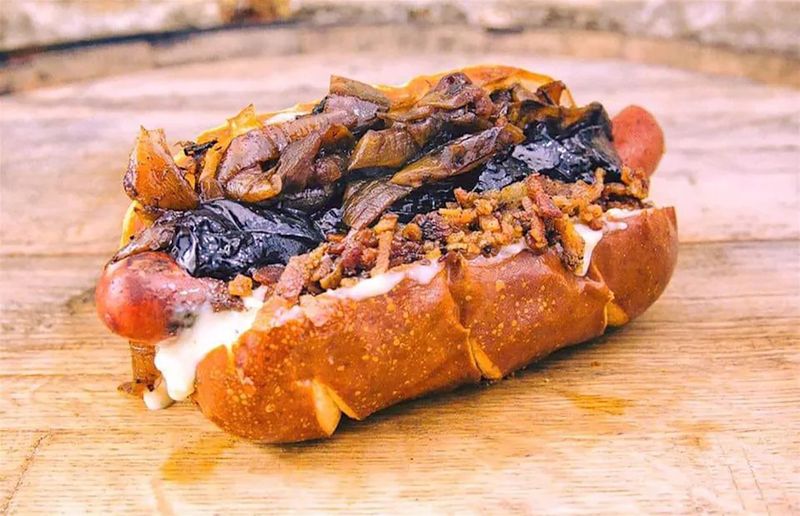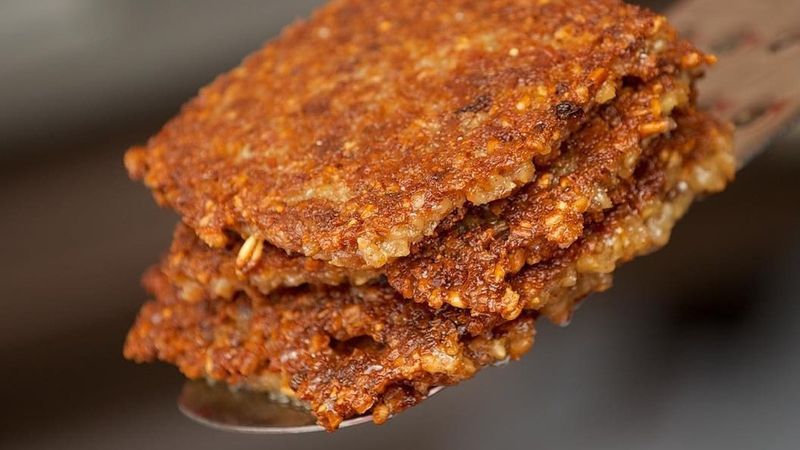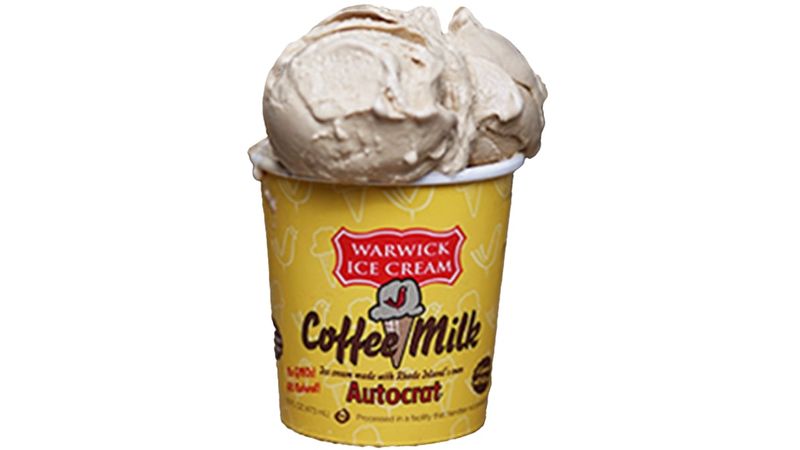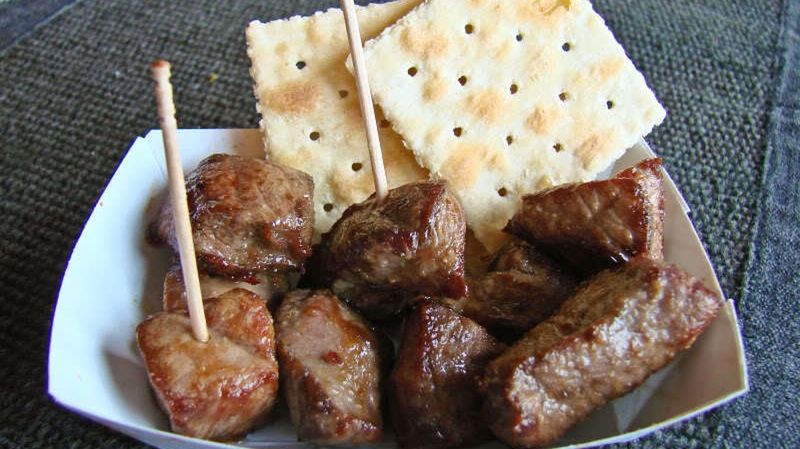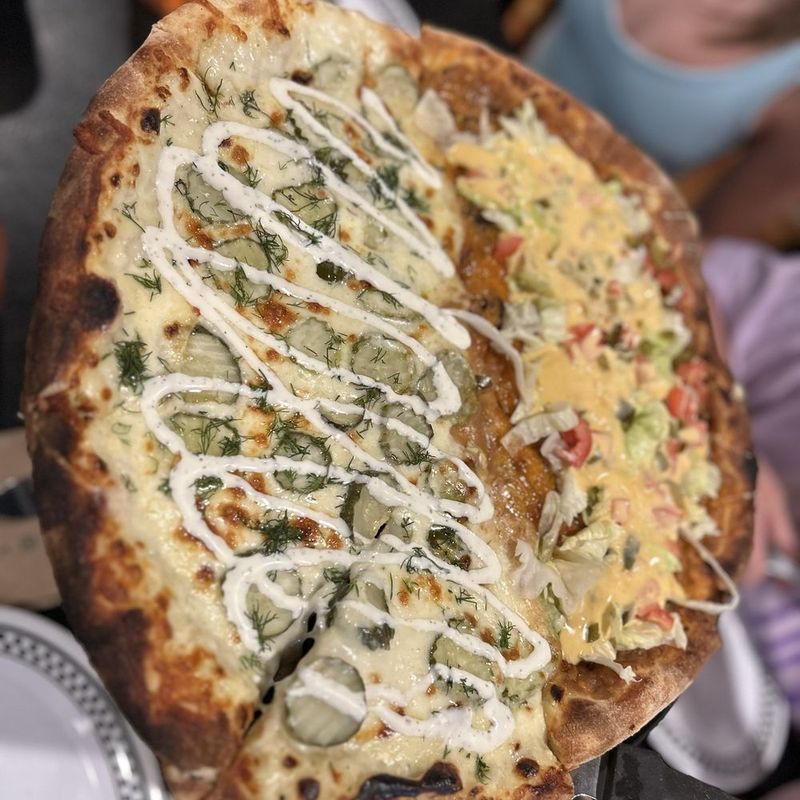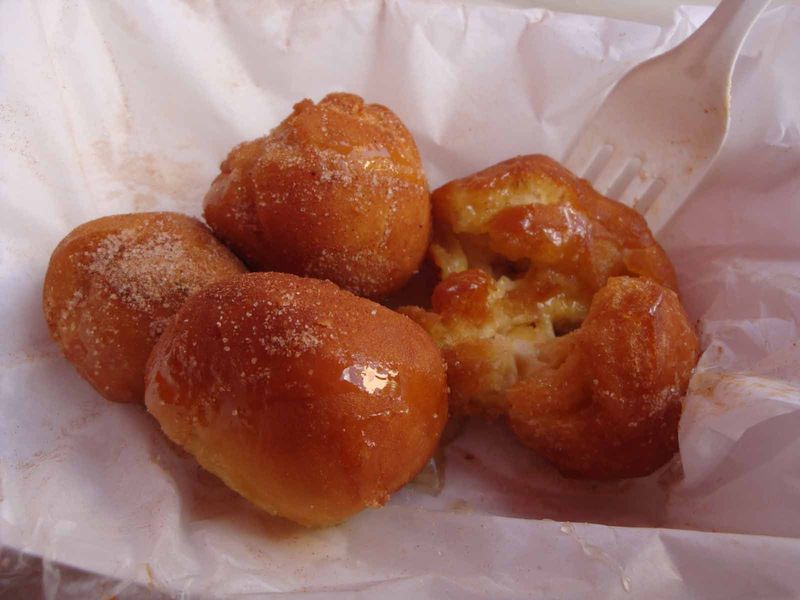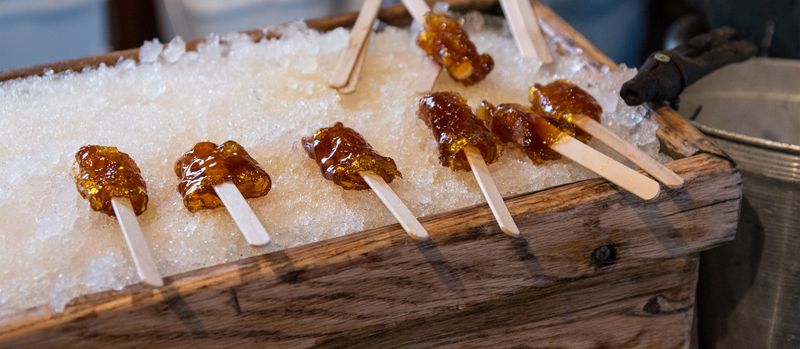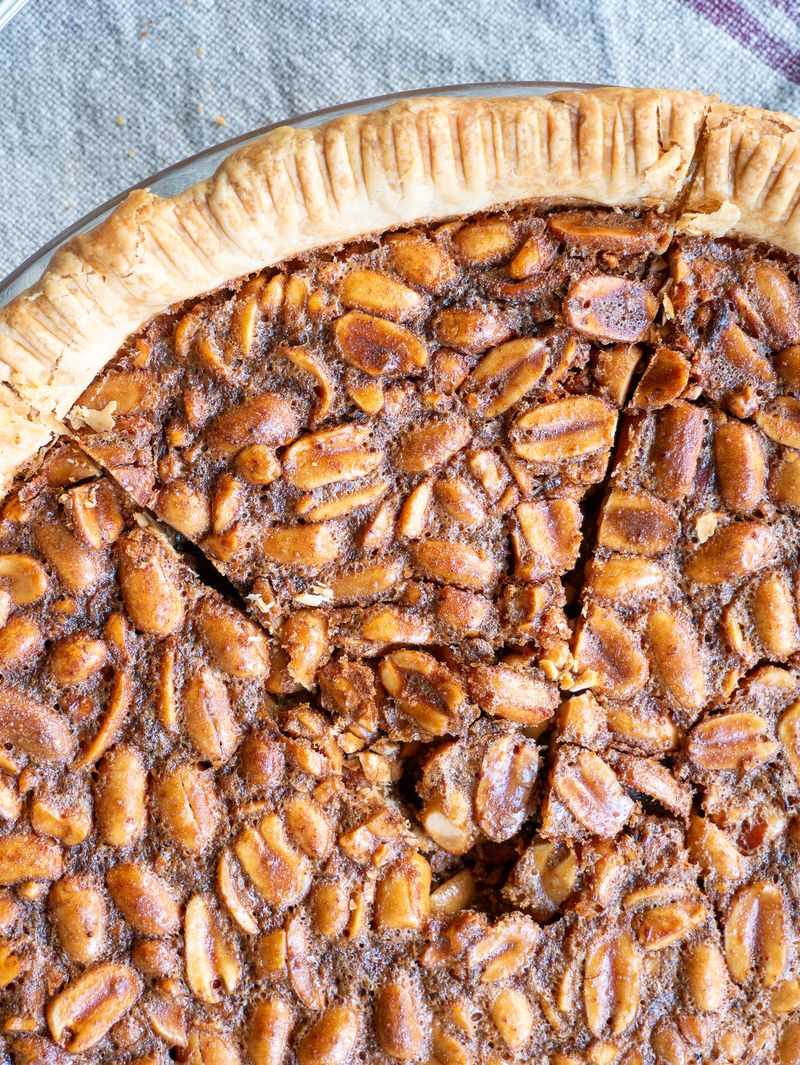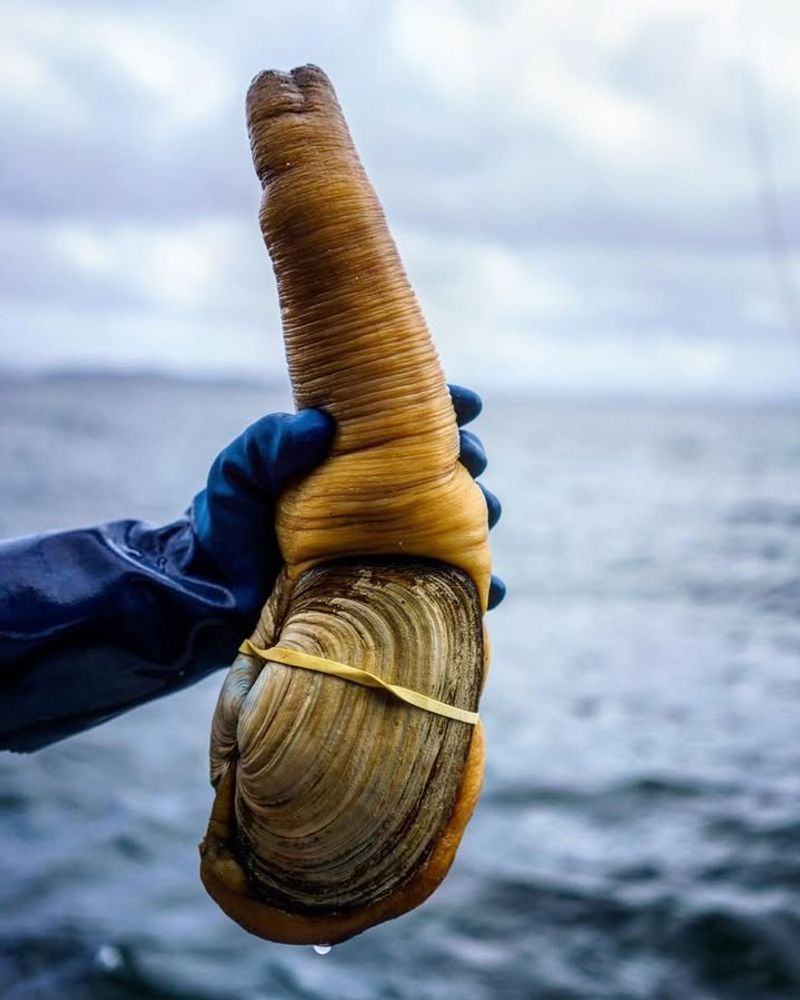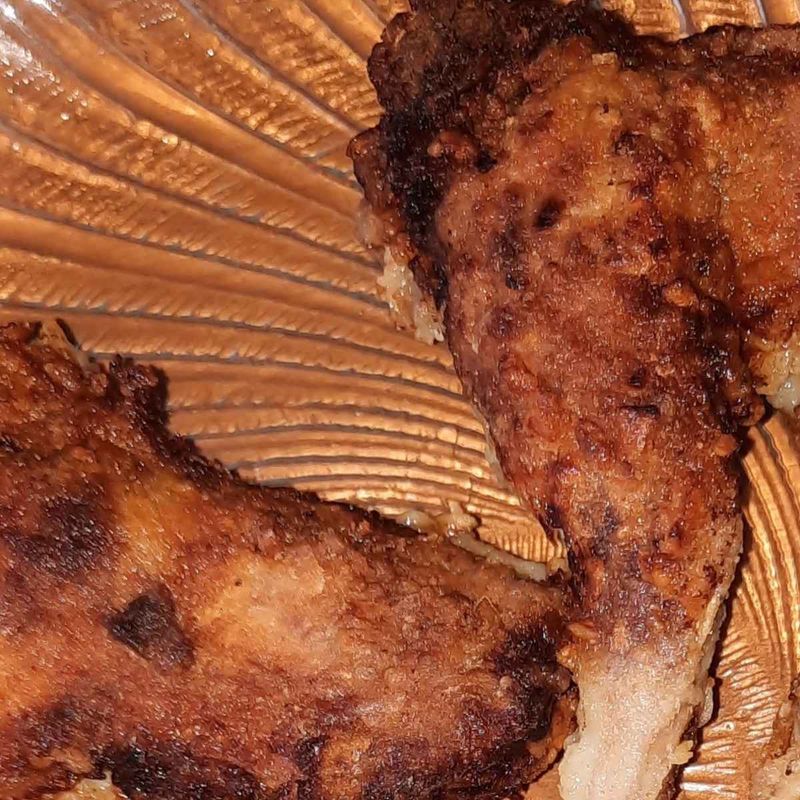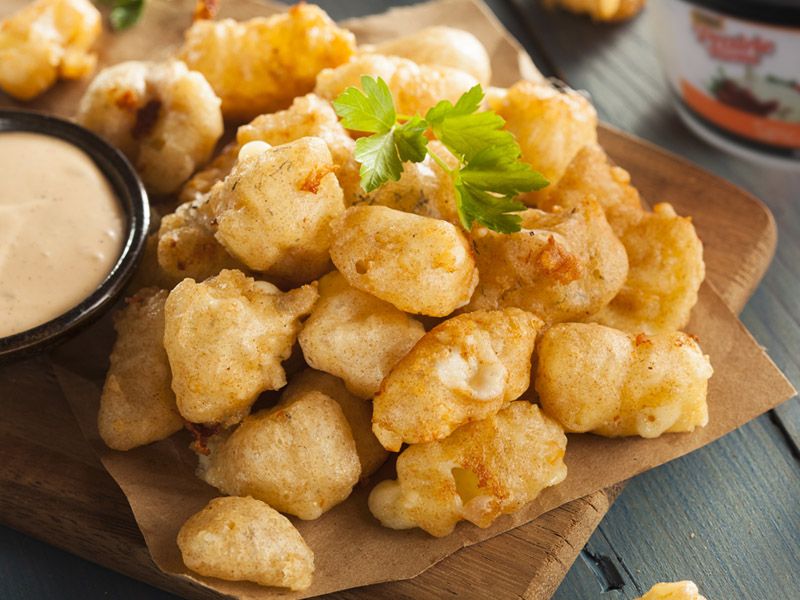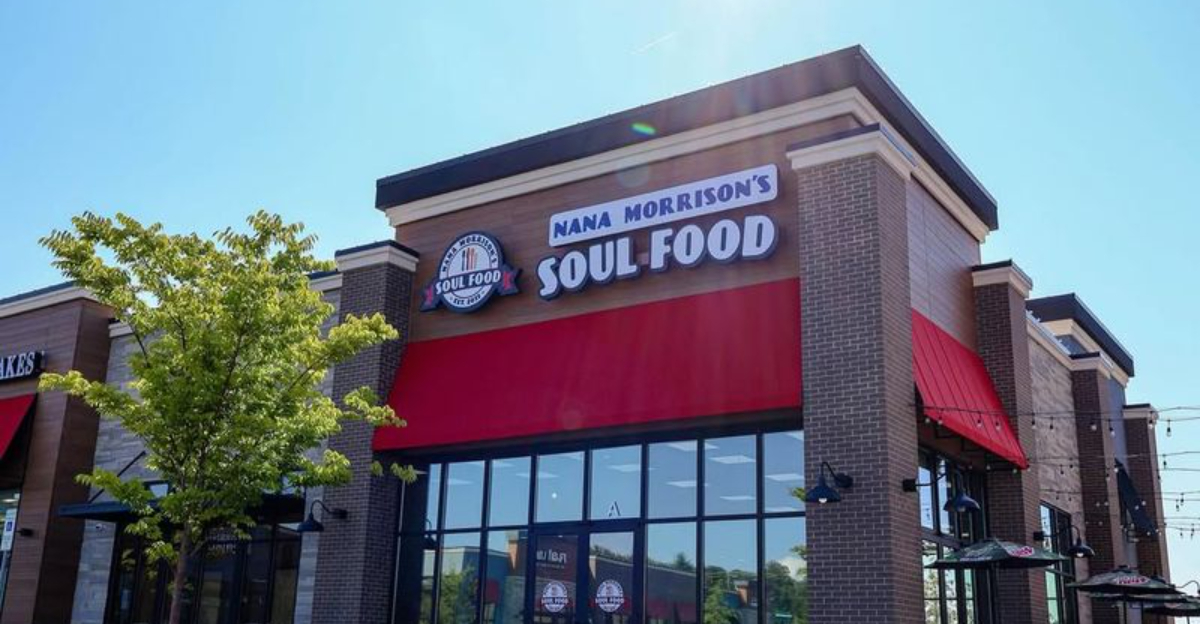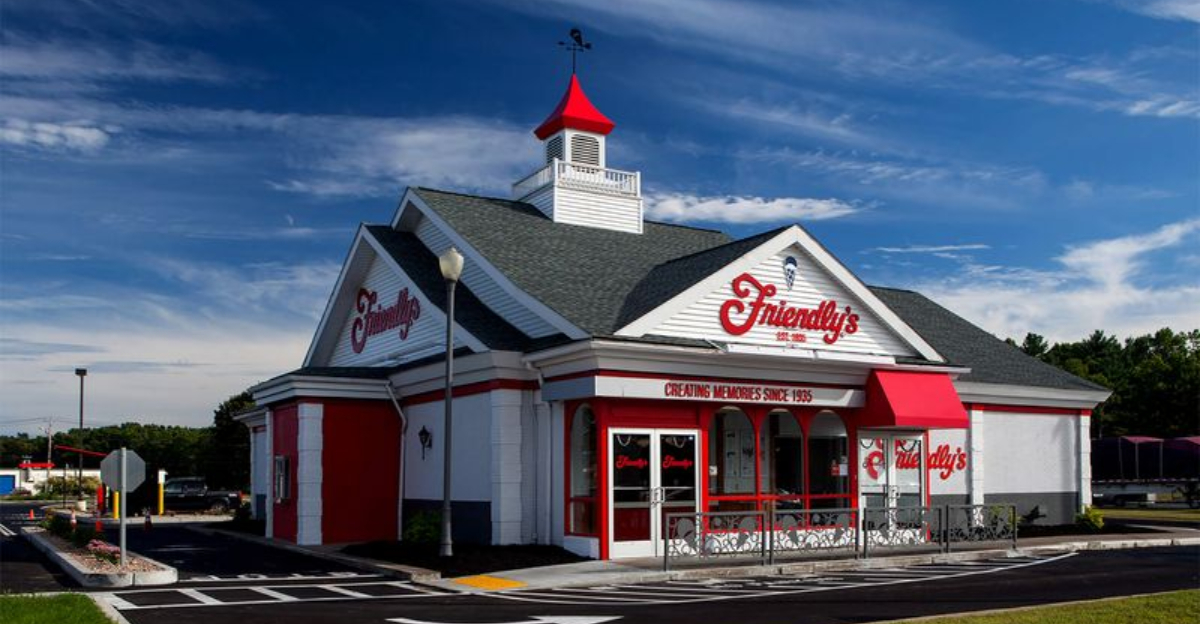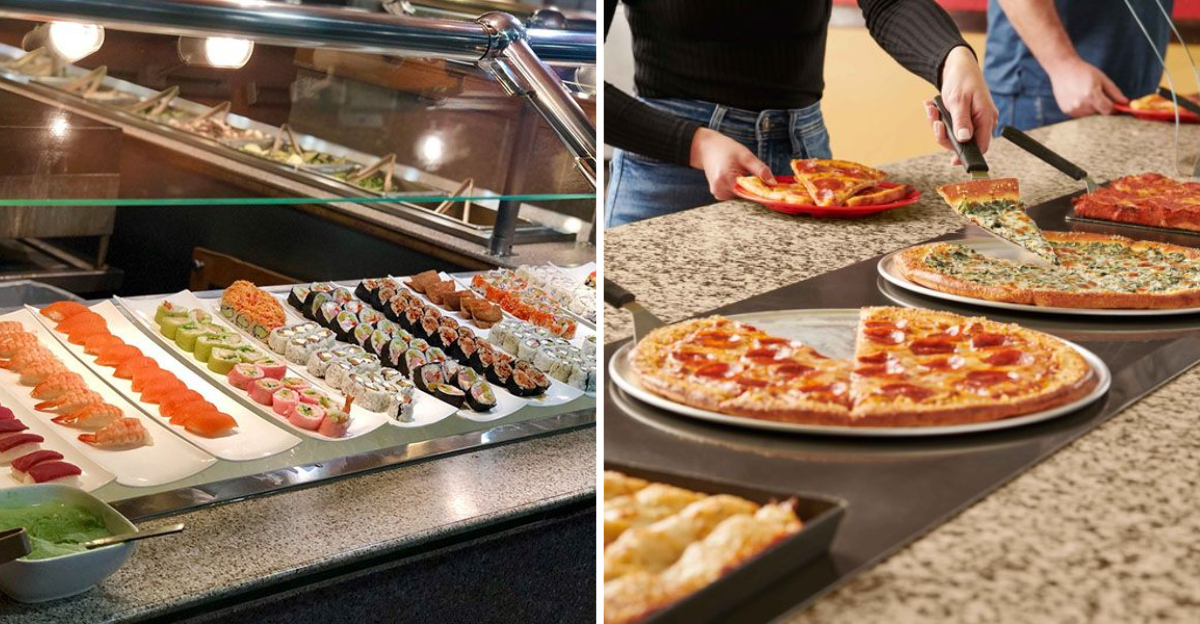The Strangest Food You’ll Find In Every State
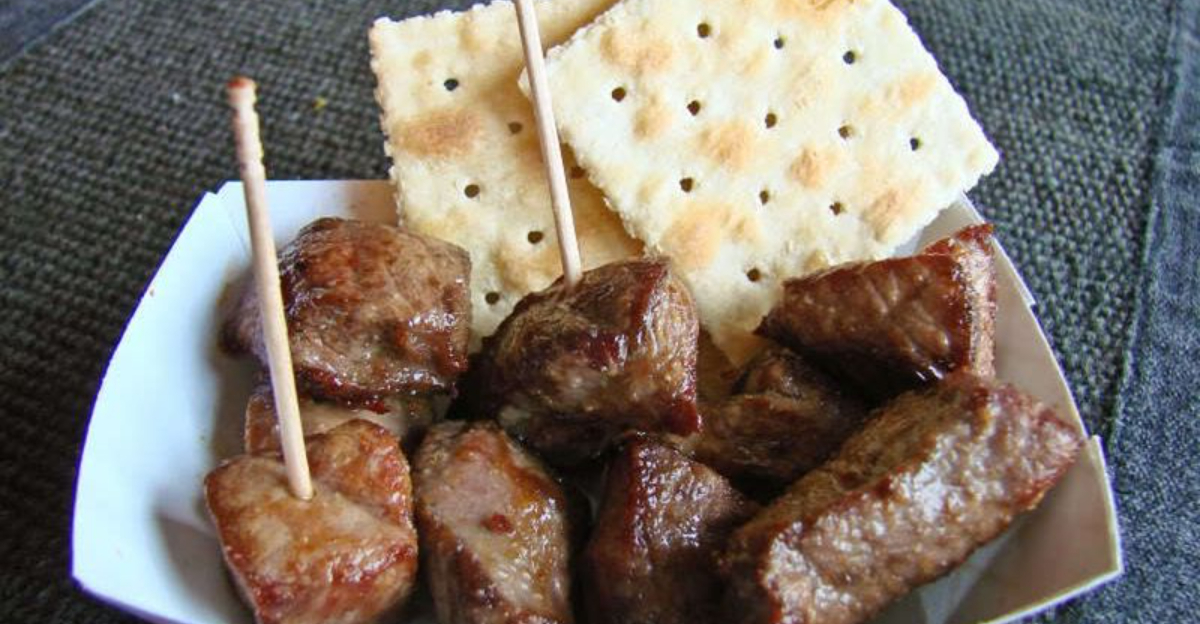
America is a melting pot of cultures, and nowhere is that more evident than in the wild and weird foods found across all fifty states.
Get ready to explore the strangest dishes that locals swear by and visitors can’t believe actually exist.
1. Tomato & Mayo Sandwich (Alabama)
Simplicity reigns supreme in Alabama kitchens where this minimalist sandwich has been a summer staple for generations. Thick slices of ripe tomatoes meet generous dollops of mayonnaise between two pieces of soft white bread.
The combination might sound odd to outsiders, but locals insist the creamy mayo perfectly complements the juicy, tangy tomatoes. It’s a nostalgic taste of Southern summers that continues to baffle and delight in equal measure.
2. Akutaq – Eskimo Ice Cream (Alaska)
Forget everything you know about ice cream because Alaska’s traditional dessert contains no dairy whatsoever. Made from whipped animal fat mixed with berries, fish, and sometimes seal oil, akutaq has sustained indigenous communities for centuries.
The texture resembles mousse more than ice cream, with a unique savory-sweet flavor profile. Modern versions sometimes use Crisco instead of traditional fats, making it slightly more approachable for curious newcomers.
3. Scorpion Lollipops (Arizona)
Only in the desert state would you find actual arachnids embedded in candy for your eating pleasure. These translucent lollipops feature real scorpions suspended in hardened sugar, creating a creepy-crawly treat that’s surprisingly popular among tourists.
The scorpions are farm-raised and completely edible, though most people just admire them rather than crunching through. It’s equal parts novelty item and daring snack for the truly adventurous.
4. Pork Brains & Eggs (Arkansas)
Arkansas breakfast tables sometimes feature this protein-packed scramble that makes most visitors do a double-take. Pork brains are scrambled right alongside eggs, creating a creamy, soft texture that locals have enjoyed for generations.
The dish tastes milder than you’d expect, with the brains adding richness rather than any strong flavor. You’ll find it canned in grocery stores throughout the state, though it’s becoming increasingly rare on restaurant menus.
5. Sushirrito (California)
Leave it to California to supersize sushi and turn it into a handheld meal. The sushirrito combines Japanese ingredients with Mexican presentation, wrapping all your favorite sushi fillings into one enormous seaweed-wrapped cylinder.
Weighing in at nearly a pound, these behemoths contain rice, raw fish, vegetables, and sauce all rolled up for on-the-go eating. It’s fusion food taken to its logical and utterly Californian conclusion.
6. Rocky Mountain Oysters (Colorado)
Despite the name, there’s nothing fishy about these controversial Colorado delicacies. Rocky Mountain oysters are actually bull testicles, breaded and deep-fried until golden brown and served with cocktail sauce.
Ranchers started eating them out of practicality during cattle castration season, and somehow the tradition stuck around. The taste resembles fried chicken or calamari, with a tender interior that surprises first-timers who muster the courage.
7. Steamed Cheeseburger (Connecticut)
Connecticut rebels against the grilled burger norm with this unique steamed version found primarily in the central part of the state. Special metal cabinets steam both the meat patty and cheese simultaneously, creating an incredibly moist and tender result.
The cheese becomes impossibly gooey and molten, draping over the burger like a blanket. Purists argue it’s superior to grilled versions, though the debate continues to rage among burger enthusiasts.
8. Slippery Dumplings (Delaware)
Don’t expect fluffy biscuit-style dumplings when ordering this Delaware comfort food classic. Slippery dumplings are flat, square noodles cooked in chicken broth until they become silky and, well, slippery.
The texture lives up to the name, sliding around your spoon as you try to capture them. They’re typically served in a rich broth with chicken, creating a hearty meal that warms you from the inside out during cold Delaware winters.
9. Peanut Butter & Jelly Burger (Florida)
Florida takes the classic PB&J sandwich and gives it a meaty makeover that confuses taste buds everywhere. A beef patty gets smothered in creamy peanut butter and sweet jelly, creating a flavor combination that shouldn’t work but somehow does.
The salty-sweet contrast hits differently than you’d imagine, with the peanut butter adding richness to the savory meat. It’s become a cult favorite at several Florida burger joints catering to adventurous eaters.
10. Peanuts in Coke (Georgia)
Georgia’s unofficial snack-drink combo has puzzled outsiders since the early 1900s when it first became popular. Salted peanuts get dumped directly into a bottle of ice-cold Coca-Cola, creating a fizzy, salty-sweet beverage-snack hybrid.
The peanuts absorb some of the soda, becoming soft and sweet while adding a salty crunch between sips. Originally born from convenience—farmers had dirty hands and needed a snack—it’s now a beloved Southern tradition.
11. Spam Musubi (Hawaii)
Hawaii’s love affair with canned meat produces this sushi-inspired snack found at every convenience store across the islands. A thick slice of fried Spam sits atop a block of rice, all wrapped together with a strip of crispy seaweed.
World War II introduced Spam to Hawaii, and locals never looked back, incorporating it into their cuisine in creative ways. The musubi has become so popular that it’s now considered a local comfort food staple.
12. Finger Steaks (Idaho)
Idaho’s answer to chicken fingers swaps poultry for beef in this regional specialty born in Boise during the 1950s. Strips of sirloin get breaded and deep-fried until crispy, then served with a tangy cocktail sauce or fry sauce for dipping.
The result tastes like a cross between chicken tenders and a country-fried steak, satisfying and hearty. Most Idahoans grow up eating them at local restaurants and consider them normal, everyday fare.
13. Spaghetti Pizza (Illinois)
Chicago already invented deep dish, so why not throw pasta on top of pizza while they’re at it? Spaghetti pizza layers cooked noodles directly onto a pizza crust, adds sauce and cheese, then bakes it all together into a carb-lover’s dream.
Some versions include meatballs or sausage for extra protein and confusion. It’s the ultimate Italian-American fusion that makes you question where pizza ends and pasta begins.
14. Sauerkraut Balls (Indiana)
Indiana’s German heritage shines through in these crispy-fried appetizers that pack a tangy punch. Sauerkraut gets mixed with cream cheese, ham, and spices, rolled into balls, breaded, and deep-fried until golden and crunchy.
The exterior shatters to reveal a creamy, sour filling that’s surprisingly addictive once you get past the unusual concept. They’re party favorites throughout Indiana, especially during the holiday season and at local festivals.
15. Kumla – Norwegian Dumpling (Iowa)
Iowa’s Scandinavian immigrants brought this hearty potato dumpling that’s become a regional comfort food staple. Grated raw potatoes get mixed with flour and salt, formed into baseball-sized spheres, then boiled until they’re dense and filling.
Traditionally served with butter, salt, and sometimes pork, kumla sticks to your ribs like nothing else. The texture falls somewhere between a potato and a dumpling, heavy but satisfying on cold Midwestern nights.
16. S’more Burger (Kansas)
Kansas takes campfire nostalgia and slaps it onto a burger in this dessert-meets-dinner creation. A beef patty gets topped with graham crackers, chocolate, and toasted marshmallows, creating a sweet and savory experience that challenges your taste buds.
Some versions add bacon for extra savory contrast against the sweet toppings. It’s the kind of food that exists because someone asked “what if?” and actually followed through with the idea.
17. Benedictine Spread (Kentucky)
Kentucky Derby parties wouldn’t be complete without this pale green spread invented in Louisville over a century ago. Cucumbers get finely grated and mixed with cream cheese, onion, and a touch of green food coloring to create a refreshing, tangy dip.
The spread appears on tea sandwiches, crackers, or vegetables at proper Southern gatherings. Despite its elegant presentation, the bright green color catches newcomers off guard every single time.
18. Nutria (Louisiana)
Louisiana’s solution to an invasive rodent problem involves eating them, naturally. Nutria are large, semi-aquatic rats that damage wetlands, so the state encourages consumption of their lean, dark meat that tastes somewhat like rabbit or dark turkey.
Cajun chefs prepare it in various ways, from stews to sausages, masking the “giant swamp rat” origin with bold spices. It’s sustainable, protein-rich, and helps the environment – if you can get past what you’re actually eating.
19. Tomalley (Maine)
Maine lobster lovers know the green stuff inside the shell isn’t just for show – it’s tomalley, the lobster’s liver and pancreas combined. This soft, greenish paste has a rich, intensely oceanic flavor that divides diners into devoted fans and disgusted skeptics.
Some spread it on toast or mix it into sauces for extra lobster flavor. Health warnings about potential toxins haven’t stopped true tomalley enthusiasts from savoring every bite.
20. Barbecue Muskrat (Maryland)
Maryland’s marshlands provide an unusual protein source that’s been part of local cuisine for generations. Muskrat meat, particularly popular in the southern parts of the state, gets barbecued or stewed until tender and flavorful.
The dark meat tastes similar to duck or dark turkey when properly prepared and seasoned. Annual muskrat dinners still happen in some Maryland communities, keeping this unusual tradition alive despite modern squeamishness about eating rodents.
21. Chow Mein Sandwich (Massachusetts)
Southeastern Massachusetts claims this bizarre fusion food that puts Chinese takeout between two slices of bread. Crispy fried chow mein noodles get piled onto a hamburger bun, sometimes with gravy or chicken added for good measure.
The crunchy texture contrasts with the soft bun in a way that’s oddly satisfying once you accept the concept. Fall River and New Bedford consider it a local specialty that utterly baffles visitors from elsewhere.
22. Dessert Nachos (Michigan)
Michigan takes the nacho concept and flips it sweet with this creative dessert that’s popping up everywhere. Cinnamon-sugar tortilla chips replace the savory version, getting topped with chocolate sauce, fruit, whipped cream, and sometimes ice cream.
The result tastes like a deconstructed churro meets an ice cream sundae, perfect for sharing. It’s become a popular menu item at restaurants looking to offer something unique and Instagram-worthy.
23. Hotdish Breakfast Bake (Minnesota)
Minnesota’s hotdish obsession extends to breakfast with this all-in-one casserole that feeds a crowd. Layers of hash browns, eggs, sausage, cheese, and sometimes tater tots get baked together until everything melds into comfort food heaven.
It’s the breakfast version of the state’s famous dinner hotdishes, designed to be made ahead and reheated. Every Minnesota family has their own version, passed down through generations of potluck-loving Midwesterners.
24. Pea Salad (Mississippi)
Mississippi potlucks always feature at least one bowl of this mayo-based salad that uses canned peas as its star ingredient. Sweet peas get mixed with cheese cubes, bacon bits, onions, and a creamy dressing that’s equal parts tangy and sweet.
The texture combination of crunchy, creamy, and soft keeps things interesting bite after bite. Northerners often react with confusion, but Southerners defend this potluck staple with surprising passion and loyalty.
25. St. Paul Sandwich (Missouri)
St. Louis claims this Chinese-American creation that nobody outside Missouri seems to know exists. An egg foo young patty gets sandwiched between white bread with lettuce, pickles, tomato, and mayo, creating a bizarre but beloved local specialty.
The crispy egg patty contrasts with the soft bread and crunchy vegetables in unexpected ways. Chinese restaurants throughout St. Louis serve them, though the sandwich remains virtually unknown elsewhere in America.
26. Rocky Mountain Oysters (Montana)
Montana shares Colorado’s love for this controversial ranch delicacy that’s exactly what you fear it might be. Bull testicles get sliced, breaded, and fried until they’re crispy outside and tender inside, served at festivals and steakhouses across Big Sky Country.
Ranchers insist they taste like chicken, though the texture tells a different story. Annual testicle festivals celebrate this unusual food with eating contests and live music for the truly brave.
27. Raisin Pie (Nebraska)
Nebraska’s pioneer heritage lives on in this Depression-era dessert that’s still surprisingly popular. Raisins get cooked down with sugar, spices, and sometimes lemon juice until they form a thick, sweet filling encased in flaky pie crust.
It’s sometimes called “funeral pie” because it was easy to make year-round when fresh fruit was scarce. The taste resembles a sweeter, more concentrated version of mincemeat pie without the meat.
28. Belly of the Beast Burger (Nevada)
Las Vegas excess extends to this monster burger that’s designed to defeat even the hungriest gamblers. Multiple beef patties stack high with bacon, eggs, cheese, onion rings, and whatever else the chef decides to throw on, creating a towering challenge.
Some versions weigh over two pounds and come with a time limit for finishing. It’s everything Vegas stands for—over-the-top, ridiculous, and oddly compelling in its sheer audacity.
29. Grape Nuts Ice Cream (New Hampshire)
New Hampshire’s beloved ice cream flavor confuses everyone who hasn’t grown up with it. Grape Nuts cereal gets mixed into vanilla ice cream, adding a crunchy, nutty texture that softens slightly as the cereal absorbs the cream.
Despite the name, there are no grapes or nuts involved—just wheat and barley cereal creating an unexpectedly pleasant crunch. It’s been a New England favorite since the 1930s, though it remains virtually unknown elsewhere.
30. Over-Loaded Oreo Bagel (New Jersey)
New Jersey bagel shops take their already-famous bagels and turn them into dessert with this over-the-top creation. A fresh bagel gets slathered with Oreo-flavored cream cheese, then topped with crushed cookies and chocolate drizzle for good measure.
It’s breakfast, dessert, and guilty pleasure all rolled into one carb-loaded package. Only in Jersey would someone think to combine two beloved foods in such an unapologetically excessive way.
31. Green Chile Sundae (New Mexico)
New Mexico’s obsession with green chile extends even to dessert in this sweet-and-spicy ice cream creation. Vanilla ice cream gets topped with roasted green chiles and sometimes caramel sauce, creating a flavor combination that challenges everything you know about sundaes.
The cold cream soothes the chile heat while the spice adds complexity to the sweetness. It’s become a tourist attraction and a point of pride for New Mexicans who put chile on absolutely everything.
32. Garbage Plate (New York)
Rochester, New York’s late-night specialty lives up to its unappetizing name with glorious excess. Home fries and macaroni salad form the base, topped with hamburger patties or hot dogs, meat sauce, onions, mustard, and sometimes ketchup.
Everything gets mixed together into a glorious mess that’s perfect for soaking up alcohol after a night out. The combination shouldn’t work, but somehow it’s become a regional icon that people crave despite its appearance.
33. Livermush (North Carolina)
North Carolina’s Appalachian region treasures this pork liver loaf that’s sliced and fried for breakfast. Pig liver gets mixed with cornmeal and spices, formed into a loaf, then sliced and pan-fried until crispy on the outside.
The taste resembles a more liver-forward version of scrapple or breakfast sausage, depending on the recipe. Annual livermush festivals celebrate this polarizing food that locals love and outsiders approach with extreme caution and skepticism.
34. 5th Bro Hot Dog (North Dakota)
North Dakota’s loaded hot dog takes a simple frank and piles on everything imaginable. Mac and cheese, bacon, jalapeños, and various sauces transform a basic hot dog into a meal that requires both hands and several napkins.
It’s bar food taken to its logical extreme, designed to satisfy hungry appetites during long, cold winters. The combination of textures and flavors somehow works, though it barely resembles a traditional hot dog by the time it’s assembled.
35. Goetta (Ohio)
Cincinnati’s German heritage produced this breakfast meat that’s equal parts sausage and oatmeal. Ground pork gets mixed with steel-cut oats and spices, formed into a loaf, then sliced and fried until crispy.
The oats give it a unique texture that’s less dense than typical sausage, absorbing flavors beautifully. It’s a Cincinnati staple that’s virtually unknown outside southwestern Ohio, despite locals’ insistence that everyone should be eating it for breakfast.
36. Catfish Wontons (Oklahoma)
Oklahoma combines Southern catfish with Asian-style wontons in this fusion appetizer that’s become a state favorite. Flaky catfish gets mixed with cream cheese and spices, wrapped in wonton wrappers, then deep-fried until golden and crispy.
The result tastes like a cross between crab rangoon and fish sticks, surprisingly addictive once you try them. It’s the kind of creative fusion that happens when different culinary traditions meet in unexpected places.
37. Pickled Pig’s Feet (Oregon)
Oregon’s pioneer history includes this preserved meat that’s still found in bars and specialty shops. Pig’s feet get boiled, then pickled in a vinegar brine with spices, creating a gelatinous, tangy snack that’s definitely an acquired taste.
The texture is what throws most people off—soft, jiggly, and full of tiny bones. Old-timers swear by them as a beer snack, though younger generations tend to avoid them except on dares.
38. Scrapple (Pennsylvania)
Pennsylvania Dutch thriftiness created this “everything but the squeal” breakfast meat that uses every part of the pig. Pork scraps and trimmings get mixed with cornmeal and spices, formed into a loaf, then sliced and fried until crispy outside and soft inside.
The name might not sound appetizing, but the taste converts many skeptics into fans. It’s a regional staple that’s sparked intense loyalty among those who grew up eating it every weekend morning.
39. Coffee Milk Ice Cream (Rhode Island)
Rhode Island’s official state drink becomes ice cream in this local favorite that tastes nothing like coffee ice cream. Coffee syrup (think chocolate syrup but coffee-flavored) gets mixed with milk to create coffee milk, which then becomes this sweet, malty ice cream.
The flavor resembles a frozen coffee milkshake more than traditional coffee ice cream, lighter and sweeter. It’s a taste of childhood for Rhode Islanders who grew up drinking coffee milk with every meal.
40. Boiled Peanuts (South Carolina)
South Carolina roadsides feature bubbling pots of these soggy legumes that confuse anyone expecting crunchy, dry peanuts. Raw peanuts get boiled in salty water for hours until they’re soft, mushy, and completely different from roasted versions.
The shells become soft enough to split open with your fingers, revealing beans with a texture like cooked edamame. They’re a beloved Southern snack that outsiders either immediately love or completely reject after one bite.
41. Chislic (South Dakota)
South Dakota’s official state snack consists of cubed red meat (usually lamb or beef) deep-fried or grilled on skewers. Brought by German-Russian immigrants, chislic gets heavily salted and served with crackers or toothpicks for easy eating.
It’s bar food perfected—simple, salty, and designed to keep you drinking. The meat stays tender and juicy despite the high heat, making it addictively snackable at gatherings throughout the state.
42. Fried Pickle Pizza (Tennessee)
Tennessee takes two Southern favorites—fried pickles and pizza—and combines them into one tangy, crispy creation. Fried pickle slices replace traditional pizza toppings, getting scattered over cheese and sometimes drizzled with ranch dressing.
The acidic pickles cut through the rich cheese while maintaining their signature crunch. It’s the kind of fusion food that sounds terrible on paper but somehow works beautifully in practice, winning over skeptics with every bite.
43. Deep-Fried Butter (Texas)
Texas State Fair vendors asked themselves if butter could be deep-fried, and the answer was a resounding yes. Frozen butter balls get coated in batter and fried until golden, creating pockets of melted butter inside a crispy shell.
Dusted with powdered sugar, they’re basically liquid fat in fried form—decadent, ridiculous, and quintessentially Texan. One bite releases a flood of butter that’s either heaven or heart attack depending on your perspective.
44. Pickle Pie (Utah)
Utah’s pregnant-woman-craving-turned-dessert features dill pickles baked into a sweet cream cheese pie. Chopped pickles get folded into a cream cheese filling, poured into a graham cracker crust, then chilled until firm.
The sweet-and-sour combination tastes better than it sounds, though it remains divisive even among Utahns. It supposedly originated from pregnancy cravings, but now it’s served at parties where it always sparks conversation and debate about whether it’s actually good.
45. Sugar on Snow (Vermont)
Vermont’s maple syrup obsession reaches peak form in this simple but magical winter treat. Hot maple syrup gets poured directly onto clean snow, where it immediately hardens into chewy, taffy-like ribbons.
Traditionally served with plain donuts and dill pickles (to cut the sweetness), it’s a sugar shack tradition during maple sugaring season. The contrast between cold snow and hot syrup creates a unique texture that’s purely Vermont in origin and execution.
46. Peanut Pie (Virginia)
Virginia takes its position as a peanut-growing state seriously, creating this pecan pie alternative that’s sweeter and nuttier. Roasted peanuts get suspended in a corn syrup and sugar filling, baked until it’s gooey and caramelized.
The taste resembles pecan pie’s richer cousin, with peanuts adding a different flavor profile and texture. It’s found at diners and pie shops throughout Virginia, though it remains relatively unknown outside the Mid-Atlantic region.
47. Geoduck (Washington)
Washington’s giant clam looks more like something from a horror movie than dinner. The geoduck (pronounced “gooey-duck”) has a massive siphon that can extend over three feet, making it one of the strangest-looking edibles in North America.
The meat is actually sweet and crunchy when prepared properly, popular in Asian cuisine and high-end restaurants. Getting past its appearance is the hardest part—once you do, it’s surprisingly delicious.
48. Fried Squirrel (West Virginia)
West Virginia’s Appalachian hunting tradition keeps this Depression-era protein source on some tables. Squirrel gets cleaned, cut into pieces, breaded, and fried just like chicken, creating a gamey but tender meat.
The dark meat tastes stronger than chicken or rabbit, with a texture that’s slightly chewier. It’s becoming less common as younger generations move away from hunting, but old-timers still consider it a delicacy worth the effort of hunting and preparing.
49. Cheese Curds (Wisconsin)
Wisconsin’s dairy obsession produces these squeaky chunks of fresh cheese that are best enjoyed fried. Cheese curds are young cheddar before it’s aged, with a unique rubbery texture that literally squeaks against your teeth when fresh.
Breaded and deep-fried, they become molten pockets of cheese heaven that Wisconsin considers essential bar food. The fresher the curd, the more pronounced the squeak—a quality test that Wisconsinites take very seriously.
50. Jackalope Summer Sausage (Wyoming)
Wyoming’s mythical jackalope (a rabbit with antelope horns) becomes “real” in this novelty sausage that’s actually elk or beef. The packaging features the legendary creature, playing into Wyoming’s cowboy humor and tourist appeal.
Obviously, no actual jackalopes were harmed in making this sausage since they don’t exist, but it’s become a popular souvenir. The meat itself tastes like quality summer sausage, but the packaging makes it Wyoming’s strangest contribution to American cuisine.





